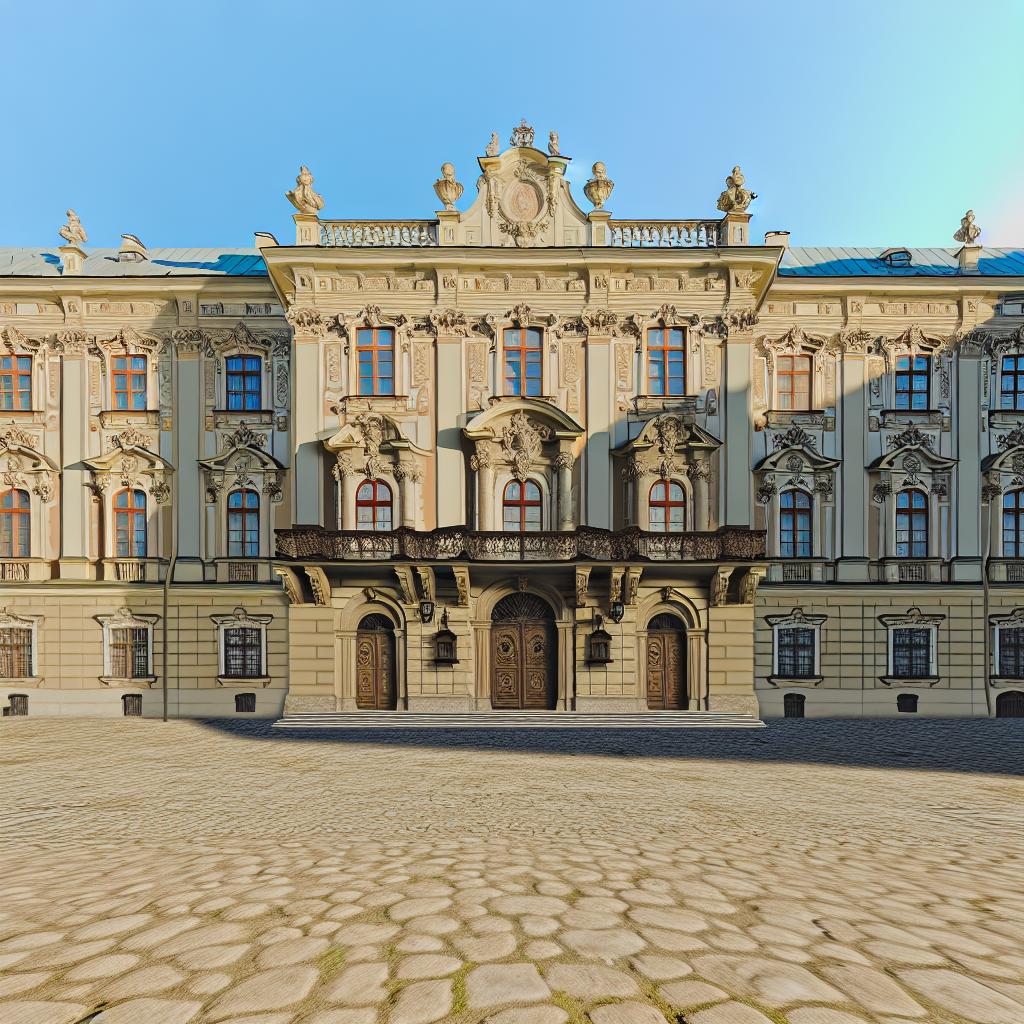Introduction to Stroganov Palace
The Stroganov Palace in Saint Petersburg, Russia, represents a remarkable example of 18th-century Russian architecture. Nestled along the famous Nevsky Prospect, this architectural marvel exemplifies the grandeur and aesthetic sophistication associated with Russia’s historical structures. The palace’s aesthetic grace and accessibility have cemented its lasting prominence within the historical landscape of Saint Petersburg.
Historical Background
The origin of the Stroganov Palace is deeply intertwined with the compelling story of the Stroganov family. As prominent and affluent figures throughout the 17th and 18th centuries, the family played a significant role in Russia’s economic and cultural development. In 1753, they decided to construct a residence that would reflect their standing and influence. To achieve this, they commissioned the renowned architect Bartolomeo Rastrelli, celebrated for his mastery of Baroque architecture. The construction proceeded rapidly, completing in 1754, a testament to the family’s resources and commitment to creating a significant architectural work.
Rastrelli’s involvement lent the palace exceptional prestige, as his expertise was instrumental in defining the Russian Baroque style of the period. Infused with traditional Russian elements, his designs resulted in a masterpiece that continues to captivate visitors today.
Architectural Features
The Stroganov Palace is lauded for its impressive Baroque architecture—a style characterized by ornate and dramatic expression. The delicate and elaborate exterior decorations captivate the viewer’s attention, effectively blending decorative complexity with architectural symmetry. This outward splendor is emblematic of Baroque grandeur, showcasing intricate details designed to convey power and opulence.
As the architectural landscape evolved, elements of the Neoclassical style began integrating into traditional Baroque designs. This transition is subtly evident in the facade of the Stroganov Palace, where Baroque flourishes meet the cleaner lines and more restrained aesthetic that Neoclassicism brought forth. The juxtaposition of these styles not only enriches the architectural composition but also marks a significant historical moment when artistic styles were in flux.
Interior Design
The interior of the Stroganov Palace mirrors the opulence seen on the exterior. Visitors are greeted by expansive halls adorned with exquisite stucco work. These spaces host a collection of period furniture that speaks to the palace’s past grandeur, offering a window into the luxurious lifestyle of the Stroganov family.
Among the interior attractions is the famed Mineral Study Room, which boasts an outstanding collection of precious stones. This room, both in its decorative design and content, highlights the family’s passion for the natural sciences and appreciation of nature’s beauty. The interior’s meticulous layout underscores the influence and affluence that characterized the Stroganov family’s existence, making it a pivotal aspect of the palace’s allure.
Current Use and Access
In modern times, the Stroganov Palace is maintained under the auspices of the State Hermitage Museum. It operates as a museum and a venue for cultural events, providing the public with an opportunity to delve into both Russian art and history. The museum exhibitions not only highlight the artistry and craftsmanship prevalent during the 18th and 19th centuries but also offer insights into the Stroganov family’s patronage of the arts and their role in Russian cultural evolution.
Visitors today can meander through the richly decorated rooms, each unfolding stories of aristocratic life and cultural patronage. By engaging with these historical narratives, guests gain a deeper understanding of how the palace’s legacy continues to influence Russian cultural identity.
The Stroganov Palace, through its architectural elegance and historical significance, remains a vital cultural asset. It invites visitors to explore the heritage and narratives that have shaped Russia’s broader cultural landscape. In doing so, it underscores the lasting impact of the Stroganov family’s lifestyle and contributions to Russian society, encouraging a continued appreciation for the country’s rich historical and artistic traditions.
As the palace endures through centuries, its continued function as a museum ensures that it not only preserves its historical integrity but also serves as an educational resource. By providing context and insight into the lives of its original inhabitants and the architectural innovations of the time, the Stroganov Palace fosters a connection between the past and present. In preserving this cultural gem, the State Hermitage Museum plays an essential role in sustaining Russia’s architectural and historical heritage for future generations to appreciate and explore.

